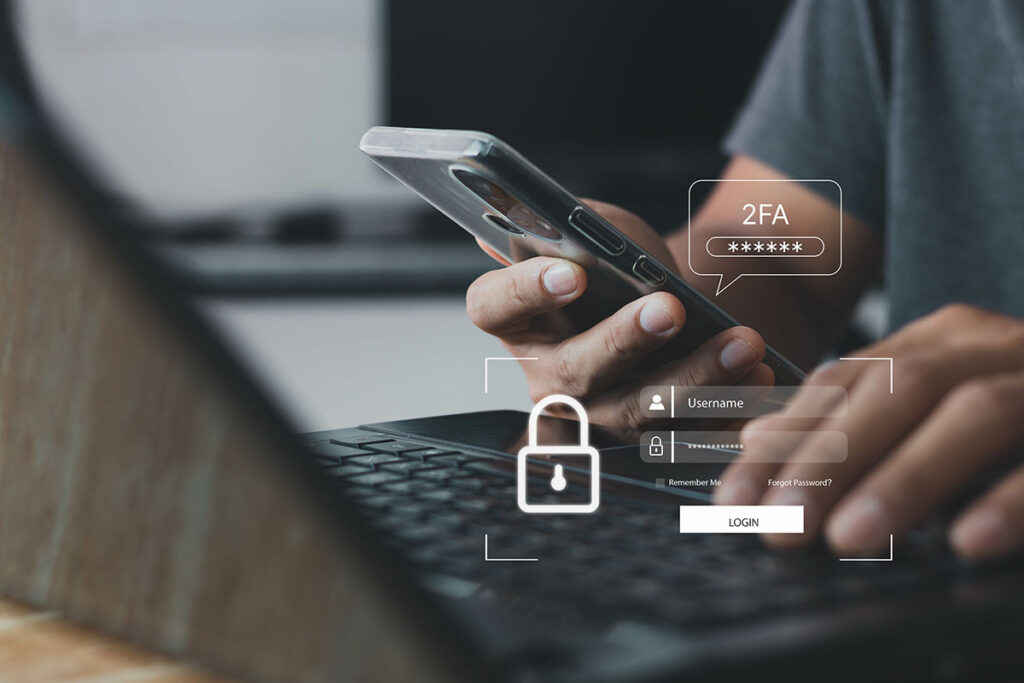8 Types of Authentication Used For User Identity Verification
User identity verification is a widely used tool across industries. As customers, many of us are familiar with these tools, as we often await one-time passwords or in-app codes when we try to log in to online accounts or make purchases.
This guide to user identity verification and the typical methods used is helpful for customers and businesses alike. Below you’ll find the eight types of authentication and their risks and benefits so you can feel confident knowing how secure the user identity verification method you’re using or choosing for your business really is.
What is user identity verification?
User identity verification is a process in which an individual’s identity is confirmed. Websites and businesses implement user identity verification methods to ensure that users are who they claim to be before granting them access to a system, service, or resource.
How does user identity verification work? Authentication tools typically collect and validate various types of information, credentials, or data provided by the user. This information can include personal identifiers like a username, email address, or unique account number, along with other authentication factors such as passwords, biometric data, or security tokens—more on these different types of info below.
While most industries use some sort of user identity verification in their systems, both within the company and at customer interfaces, authentication is especially important in the banking and finance sectors and for government entities. As data protection and cybersecurity continue to be growing concerns, however, the identity verification market is growing across all industries.
What is user identity verification used for?
What is the purpose of user identity verification? By verifying the user’s identity, organizations can ensure that only authorized individuals gain access to sensitive data or perform specific actions within their systems. Likewise, customers can be sure that their data or finances are secure and can only be accessed by them.
Effective user identity verification helps safeguard against identity theft, phishing attacks, unauthorized access, and data breaches. It plays a crucial role in protecting user accounts and maintaining privacy.
8 types of user identity verification methods
1. Password-based authentication
We’ve all created passwords. This is the most widely used user identity verification method. Users enter a unique password associated with their account, and the system compares the entered password with the stored password for authentication.
Benefits: Passwords are widely understood and easy to implement in any setting. They provide a level of security for basic authentication needs and can easily be combined with other authentication methods for increased security.
Risks: Users may choose weak or easily guessable passwords, reuse passwords across multiple accounts, or fall victim to password theft through phishing attacks. Passwords can also be susceptible to brute force, dictionary attacks, and credential stuffing, three typical methods used by cyber attackers or bad actors to crack into systems or user accounts.
2. Two-factor authentication (2FA)
Two-factor authentication, or 2FA, adds an extra layer of security by requiring users to provide two forms of identification. Typically, this involves something the user knows, such as a password, and something the user can get at the access point, like a unique code sent to their mobile phone.
Benefits: 2FA significantly enhances security by requiring an additional form of verification beyond a password. Even if the password is compromised, 2FA adds an extra layer of protection. 2FA is a popular authentication method and is relatively easy for businesses to implement and manage and for legitimate users to access.
Risks: If the second factor is compromised, such as through identity fraud or a stolen or cloned mobile device, the security of the account or system is quickly compromised. From a user perspective, 2FA is sometimes seen as inconvenient and can lock users out if they don’t have access to the required second factor, such as no signal or WiFi on their smartphone.
3. Multi-factor authentication (MFA)
Similar to 2FA, multi-factor authentication (MFA) requires users to provide multiple forms of identification as a means to prevent fraudulent activity. A typical combination of forms of user identity verification used for MFA might be a password, a confirmation via the user’s smartphone, and biometric data like fingerprints or facial recognition.
Benefits: MFA provides a higher level of security by combining multiple factors. By combining many authentication types, MFA strengthens the authentication process and makes it more difficult for attackers to gain unauthorized access.
Risks: Similar to 2FA, if any of the factors are compromised, the overall security can be undermined. The implementation and management of multiple factors can also be complex and may require additional infrastructure and costs for any business wishing to upgrade its security measures. If you’re adding MFA to your company’s security, you should also ensure that your provider has high levels of security and that you understand the types of data warehouse that they may be using.
4. Social media authentication
With social media authentication, users can log in to an application or website using their social media accounts (such as Facebook, Google, or Twitter) as a form of user identity verification. This method is popular in e-commerce and any website that encourages user registration.
Benefits: Social media authentication is convenient for users as it allows them to leverage their existing social media accounts. This simplifies the registration and login process, reducing the need to remember multiple passwords.
Risks: When used as a single-factor authentication method, reliance on social media authentication can create a single point of failure. As soon as a social media account is compromised or subject to account takeover, all linked accounts are also at risk.
5. Biometric authentication
Biometric authentication uses the unique physical characteristics of an individual for identification. Typical examples include fingerprint scanning, iris or retina scanning, facial recognition, or voice recognition. While we’re familiar with using biometrics to access our mobile phones, the banking and finance industry is increasingly using this verification tool to add an extra layer of security for users.
Benefits: Biometric verification offers convenience for users and provides a high level of security. Biometric features are unique and difficult to replicate, making it challenging for attackers to impersonate someone and access their account or data.
Risks: While biometric data is one of the most difficult to replicate, it’s not entirely without risk. Biometric data can potentially be stolen or replicated. Successful spoofing attacks can use fake fingerprints or facial images to trick biometric systems. Collecting and organizing the data needed for biometric authentication is complex, and you’ll need to use specialized software as well as a data ingestion tool.
6. Token-based authentication
Token-based verification is less common than the above online verification tools, but plenty of companies still use it. Users are provided with a physical or digital token, such as a smart card or a USB key, which contains a unique identifier. The user presents this token or enters the key from it to authenticate their identity.
Benefits: Tokens provide an additional layer of security compared to passwords alone. They can be used as a second factor for authentication and are often portable and convenient. Their codes are difficult to break using brute force attacks.
Risks: Physical tokens can be lost, stolen, or cloned, compromising the authentication process. Digital tokens may be susceptible to malware or hacking attacks.
7. One-time password (OTP)
A typical step in 2FA, one-time passwords (OTPs) are an increasingly popular verification tool. Users are provided with a unique temporary password that expires after a single use or after a short period of time. The OTP can be sent via SMS, email, or generated by an authenticator app.
Benefits: OTPs offer a convenient but effective additional layer of security, especially when used for a single session or transaction. They are time-limited and not reusable, making them less susceptible to repeat attacks.
Risks: OTPs sent via SMS can be intercepted or redirected. They can also be inconvenient for users as they may not receive the OTP due to network issues or may lose their mobile devices containing the OTP generator app.
8. Risk-based authentication
Risk-based authentication often works alongside other verification methods and assesses the risk associated with a user’s login attempt based on various factors like IP address, location, device information, and user behavior. The system then prompts for additional authentication measures if the risk is deemed high.
For example, suppose a user usually accesses their account using the platform’s US domain, but today they are accessing it using the platform’s mt domain. In that case, this behavior change may create a flag that then requires additional authentication steps.
Benefits: Risk-based authentication provides a dynamic approach to security. By analyzing contextual factors, it adapts the level of authentication required based on the perceived risk. This can provide a balance between security and usability.
Risks: While risk-based authentication offers an especially high level of security, the algorithms it uses may produce false positives or false negatives, either blocking legitimate users or allowing unauthorized access.
User identity verification: a balancing act
As the need for data, personal information, and finances to be safe from cyberattacks grows each year, so does the need for user identity verification and multiple methods for added security. Both customer data and company data are susceptible to attacks, but with a robust verification system, you can decrease your chances of losing data or even money.
Each method of user identity verification offers various risks and benefits. Companies need to find a balance between high-security systems and user convenience, as users who have to go through too many hoops may take their business elsewhere. That said, if you handle sensitive data, most users will be reassured to see several layers of security.




